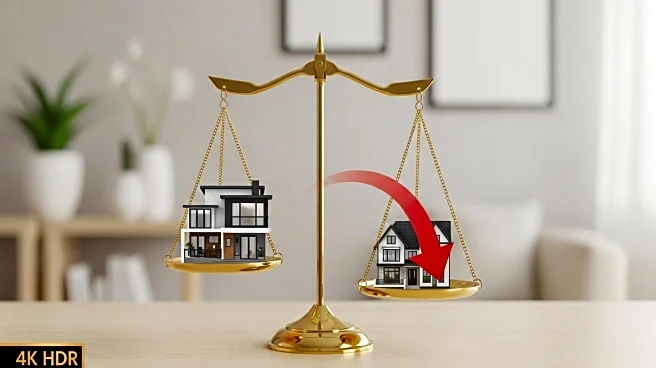What is the story about?
What's Happening?
Recent data from Realtor.com indicates that home prices in Orange County, New York, have increased, with the median home selling for $406,000 in June, up 1.5% from May. This rise contrasts with a 9.8% decrease compared to June 2024, when the median was $450,000. Single-family homes in the area saw a 4.9% increase in median price to $429,900 from the previous month. However, the sales price of condominiums and townhomes decreased by 6.2% to a median of $314,329. The number of recorded sales in Orange County dropped by 19.7% from June 2024, totaling 281 sales. Statewide, New York saw a 1.9% increase in median home prices to $509,671, with a 6.2% decrease in the number of sales.
Why It's Important?
The rise in home prices in Orange County reflects broader trends in the New York real estate market, where single-family homes have seen price increases despite a decrease in sales volume. This trend could indicate a tightening market with fewer homes available, driving up prices. The increase in high-value home sales, with 18.04% of homes selling for at least $1 million, suggests a growing demand for luxury properties. These dynamics could impact affordability and accessibility for potential homebuyers, influencing economic and demographic shifts in the region.
What's Next?
As the real estate market continues to evolve, potential buyers and sellers in Orange County and across New York will need to navigate these changing conditions. The decrease in sales volume may prompt real estate professionals to adjust strategies, while policymakers might consider measures to address housing affordability. Future data releases will be crucial in understanding whether these trends persist and how they might affect the broader economic landscape.
Beyond the Headlines
The fluctuations in home prices and sales volumes could have long-term implications for community development and local economies. Rising prices may lead to increased property taxes, affecting local government revenues and public services. Additionally, the disparity between single-family homes and condominium markets highlights potential shifts in consumer preferences and urban planning priorities.
AI Generated Content
Do you find this article useful?













